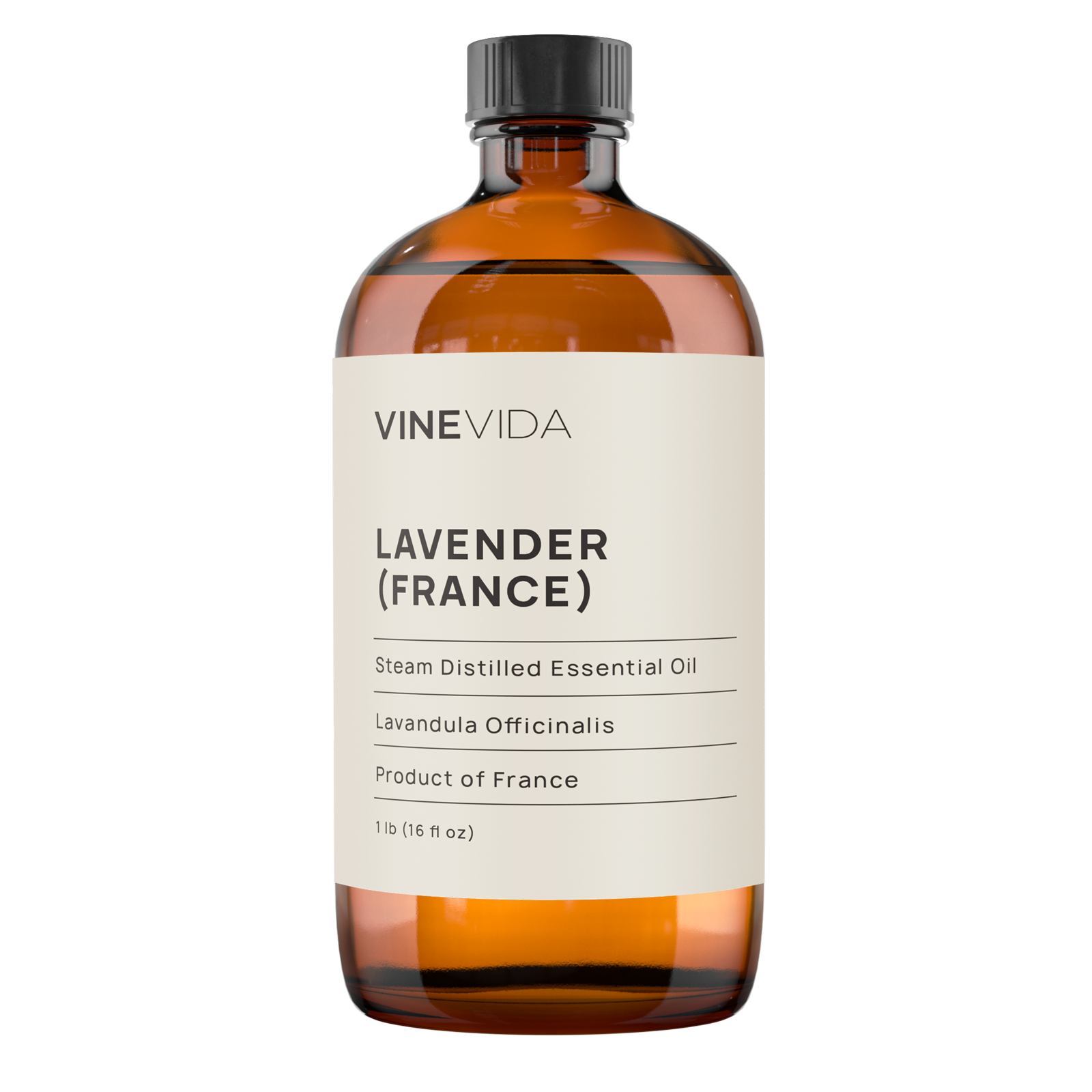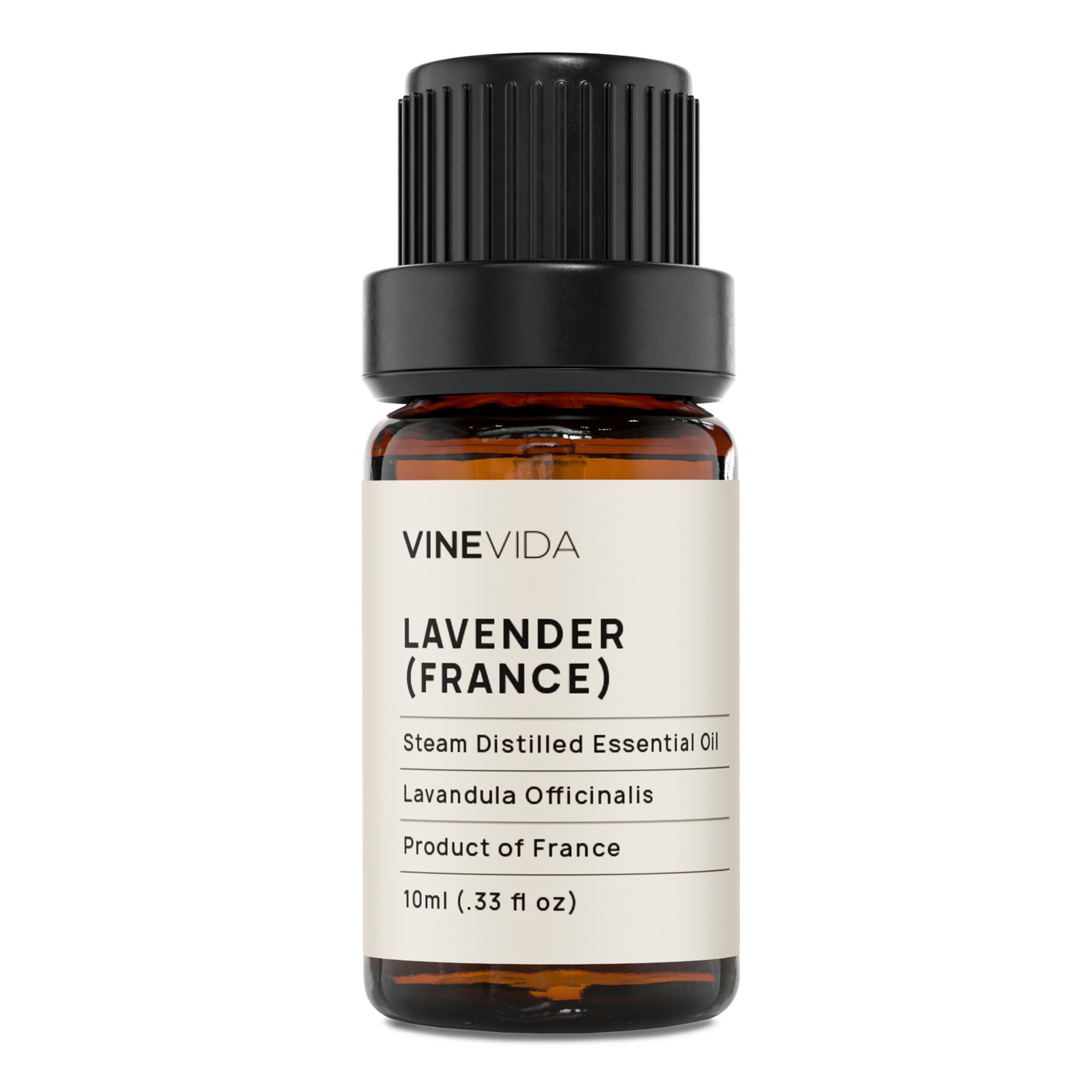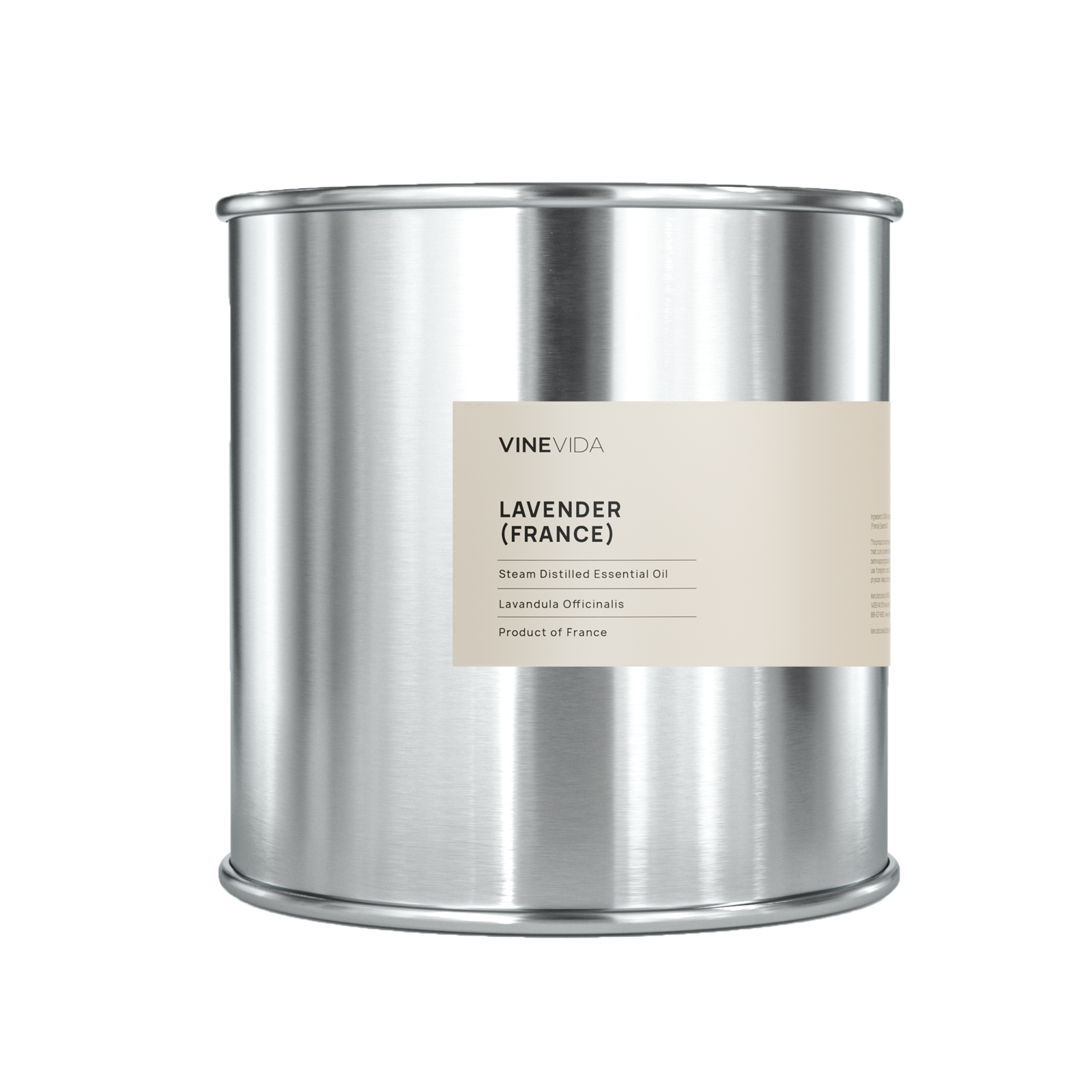Scientific Name: Lavandula Officinalis
Origin: France
Plant Part: Flowers
Scent: Sweet, Fresh, and Floral
Color: Clear
Consistency: Thin
Perfumery Note: Top - Middle
Initial Aroma Strength: Strong
Extraction Method: Steam Distilled
French Lavender Essential Oil: Uses, Benefits, and Blends
You’ve most likely seen photographs of long, sloping fields of brilliant purple Lavender, framed by brilliant orange sunsets. Most of these breathtaking photos come from Provence, France, an area famous for growing Lavender. VINEVIDA’s French Lavender Essential Oil is sweet and floral, with spicy, herbaceous undernotes. In addition to being a luscious shade of lilac, Lavender’s calming aroma makes it the perfect oil to add to candles, soaps, perfumes, and cosmetics. Diffuse some of VV’s French Lavender, break out a bottle of Provence Rose, and you and your amor will feel like you’re on the Riviera!
While all Lavender belongs to the mint family, there are 45 classified species of it. Within these species, there are hundreds of different varieties. This can make choosing the right Lavender Oil overwhelming for those who aren’t as familiar with the nuances of each. The difference between Lavender and French Lavender Essential Oil lies in the growth patterns and chemical makeup of each. While similar, these differ slightly from species to species. French Lavender is less hardy than traditional Lavender, which is the more commonly cultivated species. This is why it grows primarily in Southern France, where the climate is warm and dry. Additionally, French Lavender begins to bloom in the spring, lasting well into summer. It is slightly more herbaceous scent-wise, due to the presence of camphor.
Component Breakdown of French Lavender Essential Oil
- Linalool: Linalool is a terpene alcohol, organic to Lavender Oil. It is the main contributor to this oil’s fresh, floral aroma. You can also find it in both wine and beer, and it naturally occurs in many other plants and spices in addition to Lavender. Studies indicate that linalool exhibits many different biological activities, including anti-inflammatory, sedative, and anti-bacterial, among others.
- Linalyl Acetate: Linalyl acetate is an acetate ester and a monoterpenoid. Derived from linalool, it is another major contributor to the scent of Lavender Oil. Its aroma is fruity, and floral, with a similar taste, making linalyl acetate a common flavoring and fragrance additive.
- Camphor: A waxy terpenoid with a strong aroma, camphor is an ingredient in many fragrances, as well as being a pest deterrent. Because of its ability to repel insects, camphor was also historically used as an embalming fluid. It is also common to find camphor in skin creams and ointments meant to relieve itching, and it gives off a warming or cooling effect depending on how vigorously it is applied. Camphor is also common in Aromatherapy, where anecdotal evidence indicates it is effective in relieving symptoms of colds and congestion.
Wholesale Uses of French Lavender Oil
Similar to traditional Lavender Oil, which is also called “English Lavender Oil”, the French Lavender plant is excellent for use in Aromatherapy, skin, and hair care. The differences between the two are subtle, with the camphor in French Lavender Oil offering a lighter, more herbaceous aroma.
Soap Making
 Lavender has long been associated with purification and cleansing, dating back to Victorian times. The name itself is taken from the Latin word “Lavare” which means “To Wash”. French Lavender’s soft, floral aroma creates light, fragrant soaps that can be customized with many different combinations of oils. French Lavender also contains camphor, which can help repel pesky mosquitoes.
Lavender has long been associated with purification and cleansing, dating back to Victorian times. The name itself is taken from the Latin word “Lavare” which means “To Wash”. French Lavender’s soft, floral aroma creates light, fragrant soaps that can be customized with many different combinations of oils. French Lavender also contains camphor, which can help repel pesky mosquitoes.
What Blends Well with French Lavender Essential Oil?
French Lavender’s strong aroma lies between a middle and a top note in fragrance terminology. The middle note is often referred to as the heart of the fragrance and is sometimes referred to as a heart note. This is because middle notes tend to last longer in duration than top notes, and have an acute influence on the base note that provides the foundation of a fragrance. French Lavender Oil blends well with Citrus and other Herbaceous Oils, such as Lemon, Sweet Orange, Rosemary, Thyme, and Bergamot.
Precautions
Lavender Oil is toxic to both pets and humans when ingested. If you wish to apply Lavender Oil topically, never apply it directly to the skin. You can combine it with a carrier oil such as Coconut, or Jojoba, adding 6 drops to every ounce of carrier oil.
Alternatively, you can also add Lavender Oil to your favorite base lotions and creams. The main components in Lavender—linalool and linalyl acetate—can cause allergic reactions in some individuals which is why we recommend doing a skin test first. Apply a small amount of diluted oil to your skin. If there is no sign of irritation after 24 hours has passed, continue with use.
Flash Point
98°C
Conclusion
The sheer number of different Lavender Oils can be overwhelming for users new to essential oils. The important thing to take away is that all varieties are very similar, only differing in small aspects. At VINEVIDA we offer Bulgarian, Organic, and 40/42 Lavender Oils, in addition to French Lavender. Take a look at each of our product pages to gain more detail, and decide which best suits your needs. We are always here to answer any questions! With its light, herbaceous aroma, we recommend French lavender for use in Aromatherapy, or as an alternative to synthetic fragrances.

- Reviews
- Questions

Way better than I expected! My product was delivered on schedule. Thank you!

Good customer service
The smell is perfect and works well with my diffuser! The bottle originally came with a broken cap but I received a replacement bottle in a few days.
You may also like
Recently viewed














 Safety Data Sheet
Safety Data Sheet


















